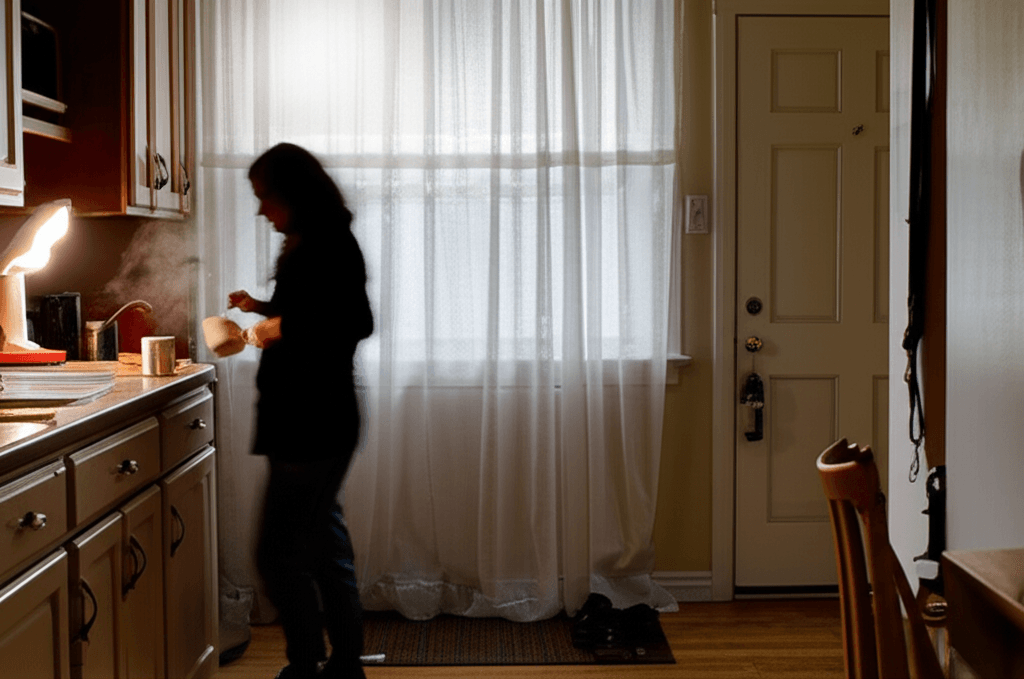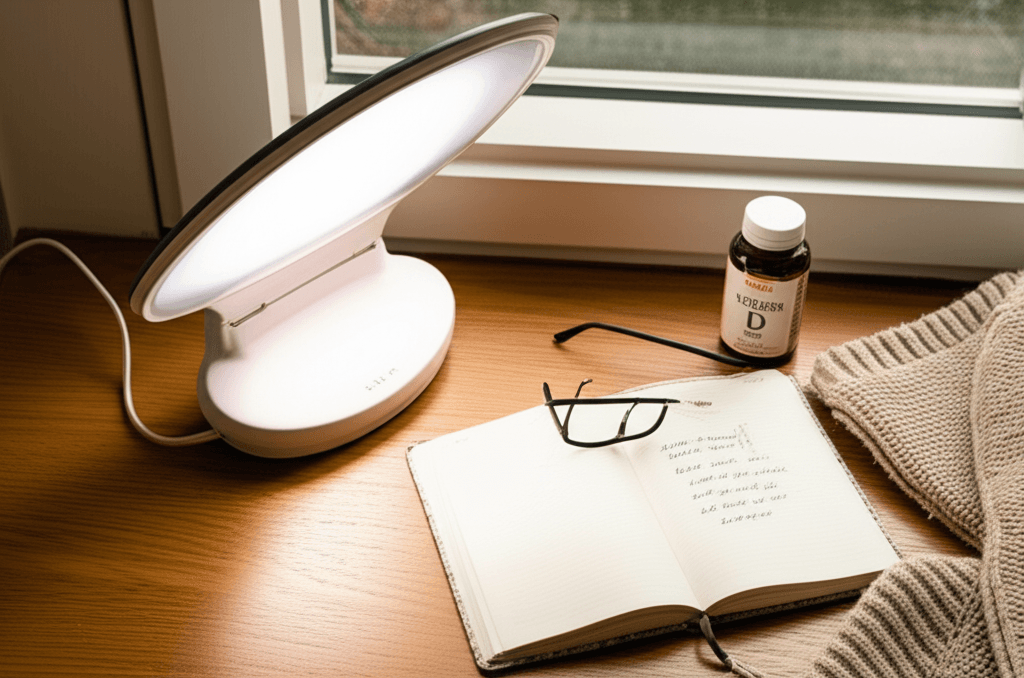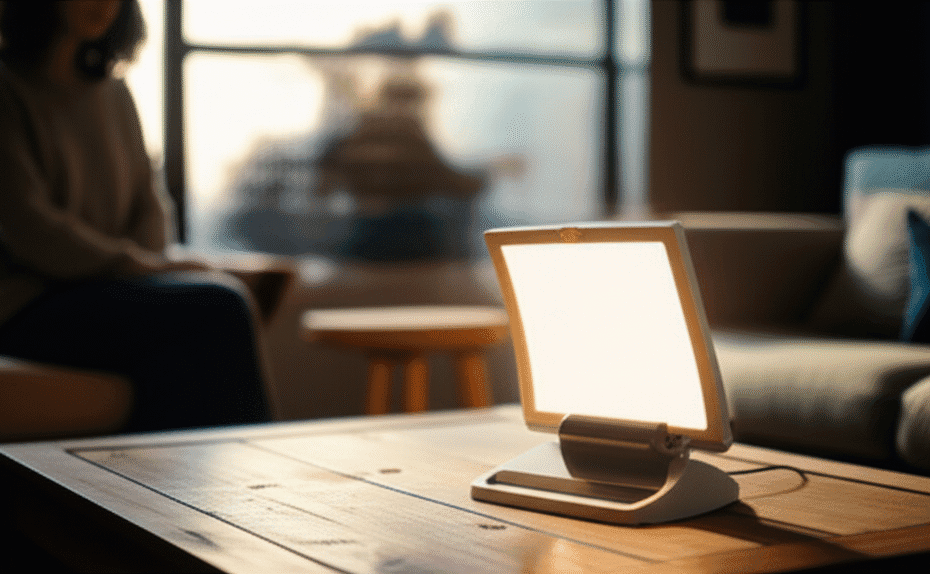Understanding Seasonal Depression
Many people find themselves affected by the cyclical changes in seasons, particularly as the days grow shorter and darker. This shift can often bring a sense of melancholy, a drop in energy, and a feeling of being out of sync. For some, these experiences go beyond the occasional winter blues, manifesting as Seasonal Affective Disorder, frequently abbreviated as SAD.
This condition is characterized by depressive symptoms that typically emerge during late fall and winter months and subside with the return of spring. Understanding SAD is a crucial first step toward identifying strategies to manage its effects on daily life and well-being. The good news is that practical and accessible approaches exist that can help individuals navigate these challenging seasonal periods, empowering them to reclaim vitality and maintain a more balanced mood throughout the year.
How Light Therapy Works
Among the most widely recognized and utilized strategies for addressing seasonal affective disorder, light therapy for SAD stands out as a prominent, non-invasive option. This approach involves consistent exposure to a specialized light box designed to mimic natural outdoor light, which is significantly reduced during darker seasons. The principle behind light therapy is straightforward: by supplementing the natural light our bodies receive, it aims to help regulate the internal biological clock, often called the circadian rhythm.
This rhythm plays a crucial role in managing our sleep-wake cycles, energy levels, and mood. When our bodies don't receive enough light, especially in the morning, these rhythms can become disrupted, contributing to symptoms associated with seasonal depression. Light therapy offers a practical way to provide that essential environmental cue.
The human body is intricately connected to its environment, and light is a powerful environmental signal. Specifically, bright light exposure influences various physiological processes. While we won't delve into complex biological mechanisms, it's generally understood that exposure to bright light, particularly in the morning, can help to normalize the body's internal clock.
This can positively impact the production and regulation of certain neurochemicals linked to mood and energy. When days are short and natural light is scarce, this natural regulation can falter. By consistently providing a dose of bright light, light therapy aims to reset or strengthen these natural rhythms, helping to alleviate the symptoms of seasonal affective disorder.
It's a way to essentially trick the body into thinking it’s experiencing brighter, longer days, even when the weather suggests otherwise. This makes it a key component of many seasonal depression treatment plans.

Daily Use and Routine
For light therapy for SAD to be most effective, consistency and proper usage are paramount. Typically, individuals are advised to use a light therapy device, often a specially designed light box, for a set period each day, usually in the morning. The duration and intensity of the exposure can vary, but generally involve sitting near the light box so that light enters the eyes indirectly, without staring directly at the source.
This routine helps to establish a regular pattern for the body's internal clock, crucial for managing seasonal mood shifts. Think of it like a daily wellness ritual, much like any other health routine you might incorporate into your day. Making it a consistent part of your morning schedule can significantly enhance its potential benefits, helping to establish a stable foundation for your mood and energy.
Integrating light therapy into a broader wellness routine can amplify its effectiveness as a seasonal depression treatment. This means considering it alongside other supportive practices such as maintaining a healthy diet, engaging in regular physical activity, and ensuring adequate social connection. Light therapy serves as a valuable tool, but it works best when part of a comprehensive approach to self-care.
It’s a proactive step that individuals can take to support their mental and emotional health during periods when natural light is scarce. Many people find that creating a dedicated space for their light therapy sessions, perhaps while enjoying breakfast or reading, helps to cement it as a positive and integral part of their day. Viewing it as an investment in personal well-being can encourage adherence and maximize its potential benefits.
Choosing a Light Therapy Device
When considering light therapy as a seasonal depression treatment, understanding the features of various light therapy Health Devices can be helpful. While the core principle remains the same—delivering bright light—devices can differ in terms of intensity, light spectrum, and portability. Most effective light boxes emit full-spectrum light at a specific intensity, measured in lux, which is significantly brighter than typical indoor lighting.
Some devices might offer adjustable settings, allowing users to tailor the experience to their comfort and needs. The design of these wellness tools also varies, from compact, portable units ideal for travel to larger, more stationary models suitable for home or office use. The key is to find a device that fits seamlessly into your daily routine, making it easier to maintain consistency and reap the benefits of regular light exposure.

Long-Term Benefits and Empowerment
The consistent application of bright light exposure through specialized light therapy devices underscores its role as a fundamental Health Device for managing seasonal mood fluctuations. Unlike temporary fixes, light therapy offers a sustained and proactive method to influence the body’s natural rhythms. The cumulative effect of daily exposure can be profound, building resilience against the typical downturns associated with shorter days.
It’s about more than just a momentary boost; it’s about establishing a physiological baseline that supports consistent mood and energy. This commitment to regular use of light therapy contributes significantly to long-term wellness, providing a dependable mechanism for individuals to navigate the complexities of seasonal changes with greater ease and stability. This proactive self-care can be empowering, giving individuals a tangible way to influence their daily experience.
Ultimately, incorporating light therapy for SAD into one's life is an act of empowerment. It offers a tangible, accessible method to counteract environmental factors that can contribute to seasonal depression. By consciously choosing to expose oneself to beneficial light, individuals are taking an active role in managing their own wellness and actively pursuing seasonal depression treatment.
This proactive stance can foster a sense of control and optimism, transforming what might otherwise be a challenging period into an opportunity for focused self-care. The availability of effective light therapy devices means that support is within reach, enabling many to maintain their vitality and positivity even when the natural world outside seems to dim. It's about harnessing a simple, natural element—light—to cultivate a brighter internal world, fostering resilience and encouraging sustained well-being through the seasons.
Safety and Best Practices
When embarking on light therapy for SAD, it’s always wise to approach it with an understanding of best practices. While light therapy devices are generally considered safe for most individuals, it is recommended to consult with a healthcare professional to ensure it is the right approach for your specific circumstances, especially if you have pre-existing eye conditions or are taking certain medications. Starting with shorter sessions and gradually increasing duration as comfort allows can be a sensible strategy.
Paying attention to your body's response and adjusting your routine accordingly is key. The goal is to create a sustainable and beneficial practice that genuinely supports your mood and energy levels throughout the challenging darker months, offering a reliable seasonal depression treatment. Remember, consistency and listening to your body are your best guides on this journey.
Embrace the potential for brighter days and enhanced well-being by exploring the benefits of light therapy. If you're ready to integrate a reliable solution into your daily routine, Light Therapy X offers a practical approach for managing seasonal mood shifts. As a top-tier option in Health Devices and Light Therapy, it's designed to support your natural rhythms, promote overall wellness, and help you navigate the darker months with greater vitality and comfort, empowering your self-care journey towards a more balanced life.
Disclaimer: This post contains affiliate links. We may earn a small commission at no extra cost to you. This helps us keep our blog running.
